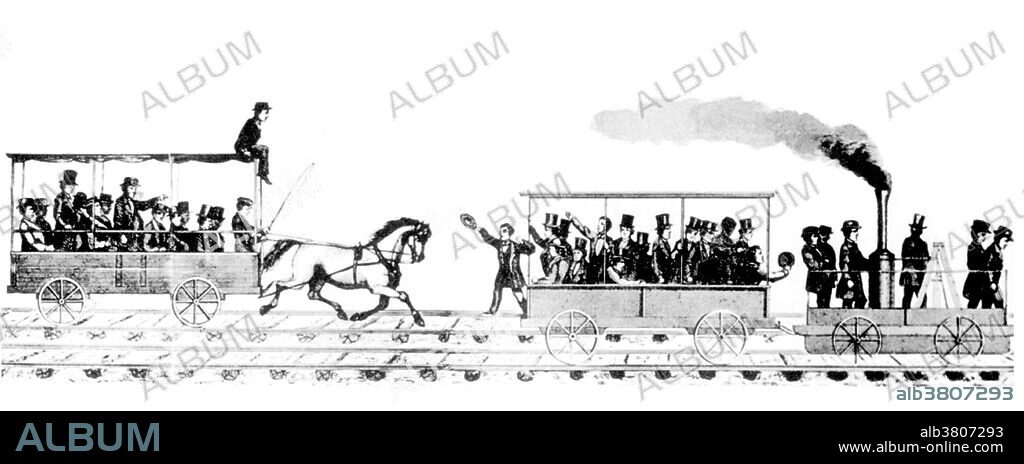alb3807293
"Tom Thumb" Races Stagecoach, 1830

|
Zu einem anderen Lightbox hinzufügen |
|
Zu einem anderen Lightbox hinzufügen |



Haben Sie bereits ein Konto? Anmelden
Sie haben kein Konto? Registrieren
Dieses Bild kaufen.
Nutzung auswählen:

Titel:
"Tom Thumb" Races Stagecoach, 1830
Untertitel:
Siehe automatische Übersetzung
Tom Thumb was the first American built steam locomotive to operate on a common-carrier railroad. Designed and constructed by Peter Cooper in 1830, it was built to convince owners of the newly formed Baltimore and Ohio Railroad (B&O) to use steam engines and not intended to enter revenue service. Testing was performed on the company's track between Baltimore and Ellicott Mills. Two tracks had been constructed, which led the owners of Stockton and Stokes stagecoach company to challenge the locomotive to a race and on August 28, 1830, the race was held. The challenge accepted, Tom Thumb was easily able to pull away from the horse until the belt slipped off the blower pulley. Without the blower, the boiler did not draw adequately and the locomotive lost power, allowing the horse to pass and win the race. However, the demonstration was successful; and in the following year, the railroad committed to the use of steam locomotion and held trials for a working engine.
Bildnachweis:
Album / NYPL/Science Source
Freigaben (Releases):
Bildgröße:
5400 x 2170 px | 33.5 MB
Druckgröße:
45.7 x 18.4 cm | 18.0 x 7.2 in (300 dpi)
Schlüsselwörter:
AMERIKANER • BERÜHMT • BERÜHMTE PERSÖNLICHKEIT • DAMPFLOKOMOTIVE • DAMPFMASCHINE • FAHRGAST • ILLUSTRATION • ILLUSTRATIONS • MASCHINENBAU • NOTABEL • PASSAGIER • PROMINENZ • TECHNOLOGIE • TIEFBAU
 Pinterest
Pinterest Twitter
Twitter Facebook
Facebook Link kopieren
Link kopieren Email
Email
